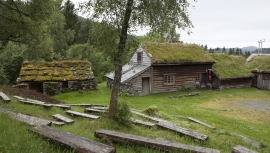- Remove Museums, nature conservation, cultural heritage filter Museums, nature conservation, cultural heritage
- Remove Arkeologi filter Arkeologi
- Remove Communications filter Communications

Bergensbanen
Already at the beginning of the 1870s demands were made that there had to be a railway connection between Bergen and East Norway. The first section between Bergen and Voss was finished in 1883. The route alternatives further on were many: Lærdal-Valdres, Aurland-Geiteryggen, Raundalen-Finse and Ulvik-Finse. Following a long dispute, an agreement was finally reached that the middle route alternative, Raundalen- Myrdal- Finse, was the best alternative. In 1894 the government passed a resolution that the Bergen railway should be built, but only the section Voss-Taugevatn. This was a political gamble in order to make the rest of the country participate in the plans. In 1898 it was approved that the railway be continued eastwards from Taugevatn to Oslo. This high mountain project was one of the most challenging railway projects in Europe. The Bergen railway was to be built across a mountain plateau without roads.

Dalseid- Eidslandet road construction

Dyrskard
Right from the start the road across Haukelifjell was a road from “fjord to fjord”, from the bottom of Sørfjorden to Dalen in Telemark. The connection between Røldal-Haukelifjell was considered so important by Stortinget (Parliament) that the road construction Odda-Dalen was approved already in 1853.
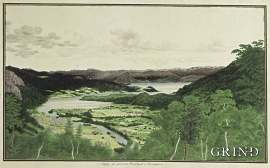
Earth and stone
"Humus" is a word with great meaning. It is the soil we live from, in addition to the resources we get from the ocean. This layer of earth - sometimes appearing as loose fertile organic matter; other places as scanty and acidic soil - is found in varying thicknesses over the bedrock. It is the result of 10,000 years of breakdown and erosion following the last ice age, and then several thousand years of cultivation in more recent times. The soil we can buy at the garden centre is a different product than the "natural" humus layer, formed of processes occurring far under the earth's surface. If you dig your spade into the soil where it has not been ploughed before, you will see that there is a big difference in colour, soil structure, moisture and stone content. We might say that the soil is fertile and easily worked some places, whereas other places folk might have given up trying to grow anything on their small patches of land, which then become overgrown with birch and thicket. Modern agriculture does not have room for small stumps between the piles of stone. Nowadays, machines do the job, and they require a lot of space and flat ground.
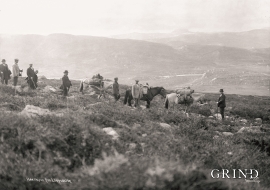
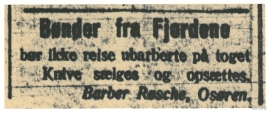
Farmers from the Fjords
Eitt av dei store samferdsleprosjekta på Vestlandet mot slutten av 1800-talet var opninga av Nesttun-Osbanen i 1894 – ei oppbløming av lokalhandel, turisttrafikk og «landliggere».
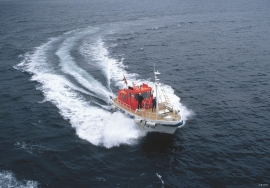

From “Spearway” to National Highway

